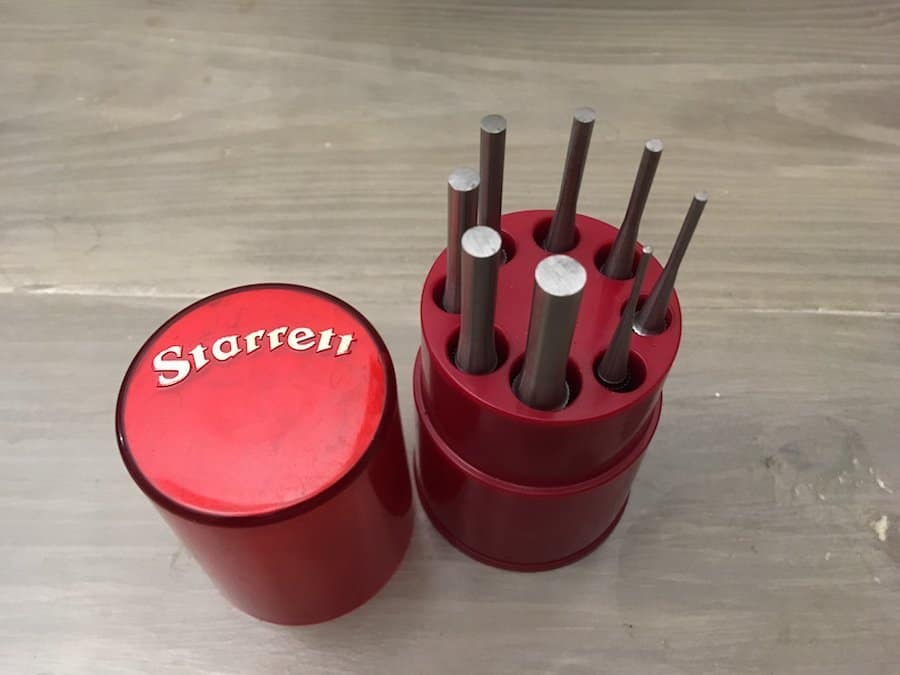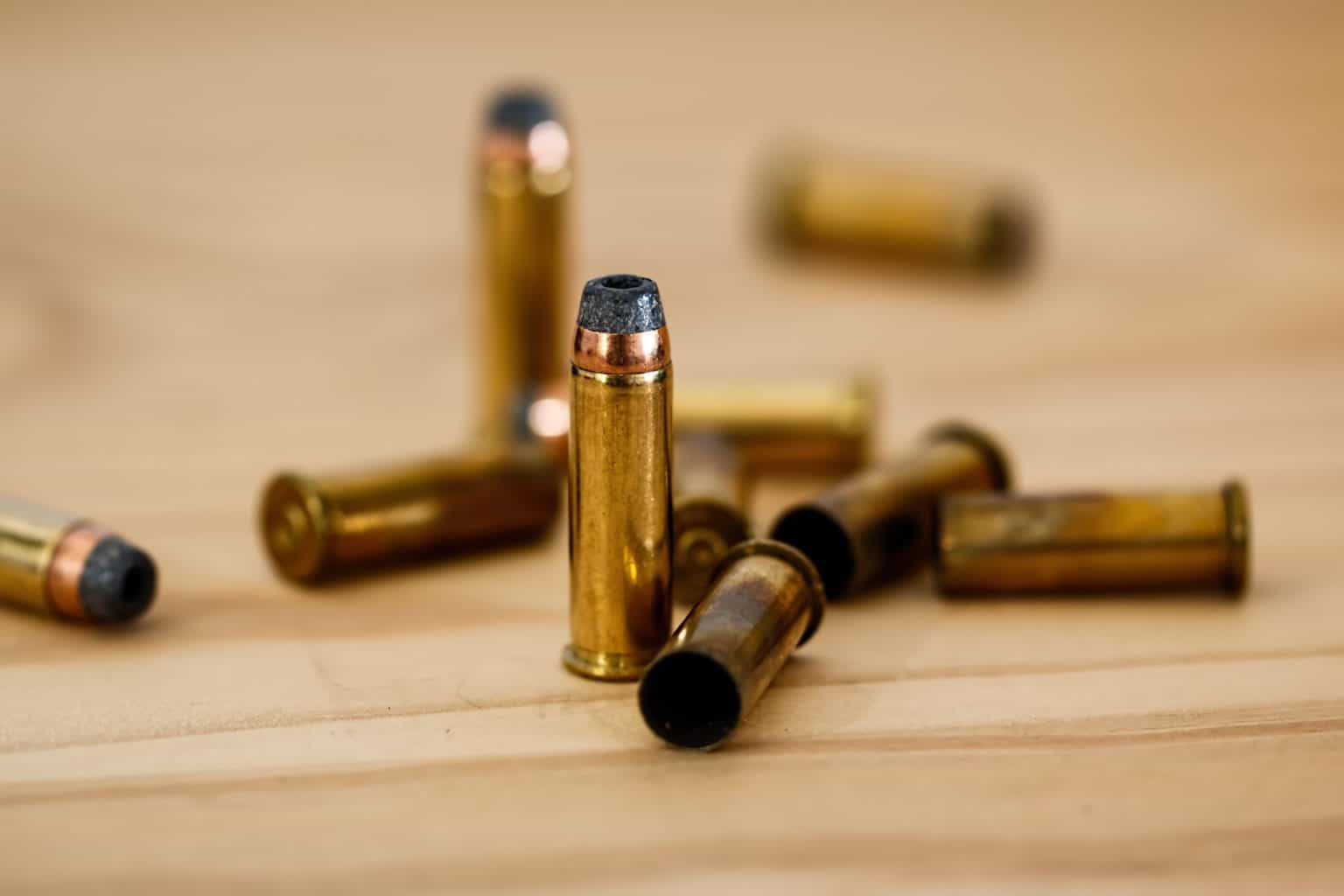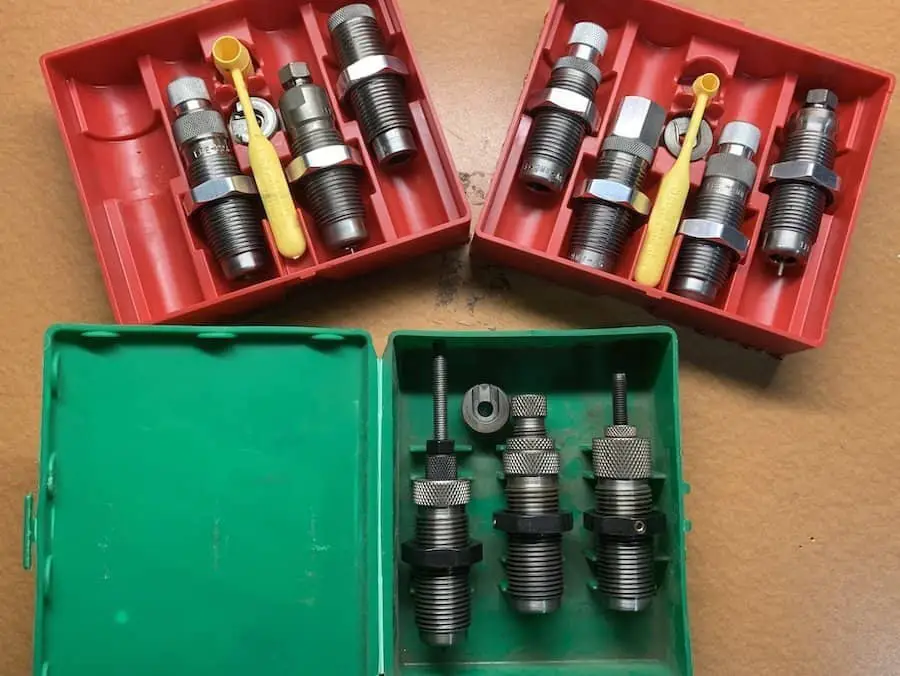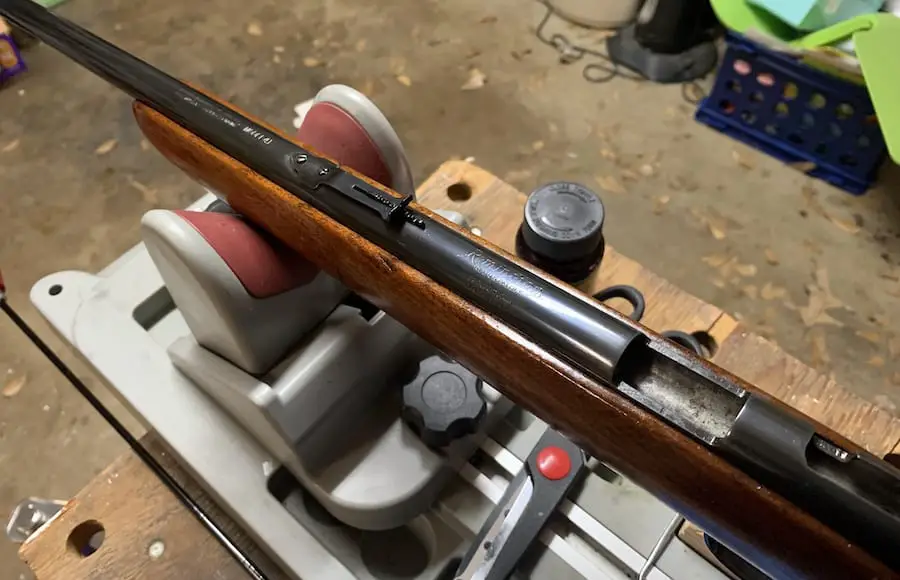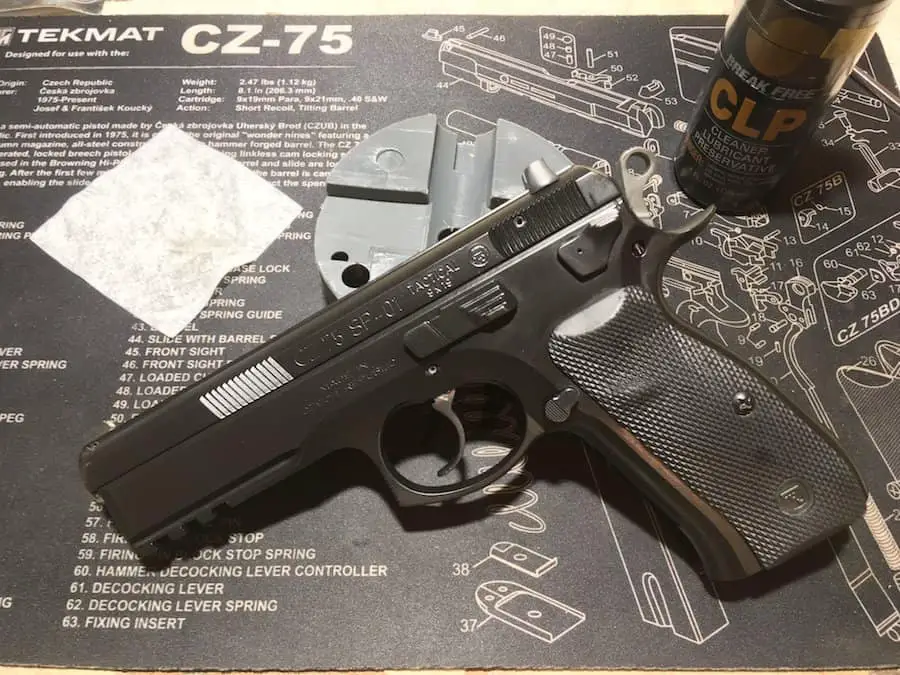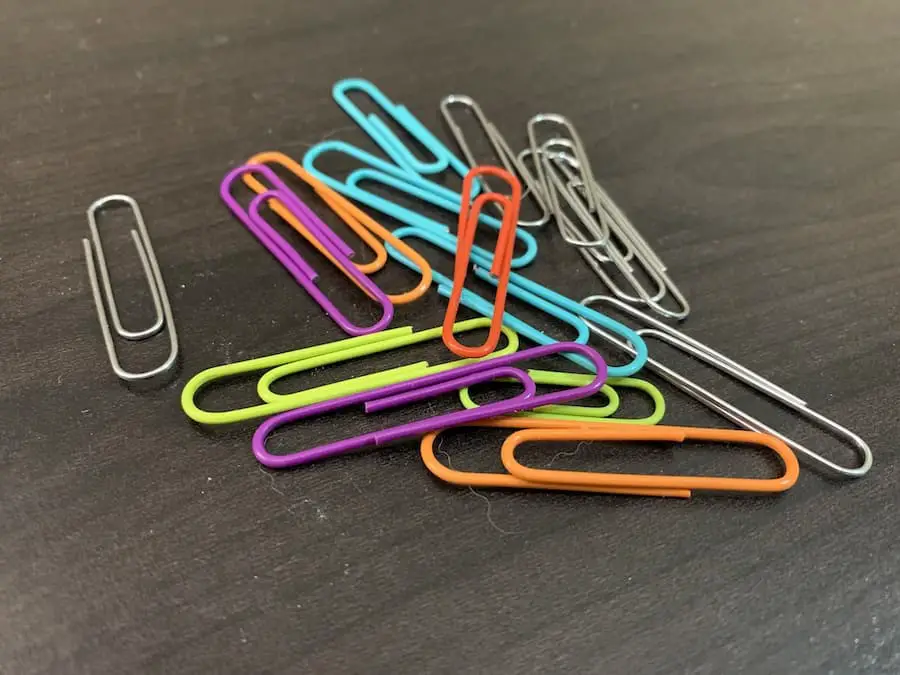Essential Reloading Equipment: Tools for Handloading
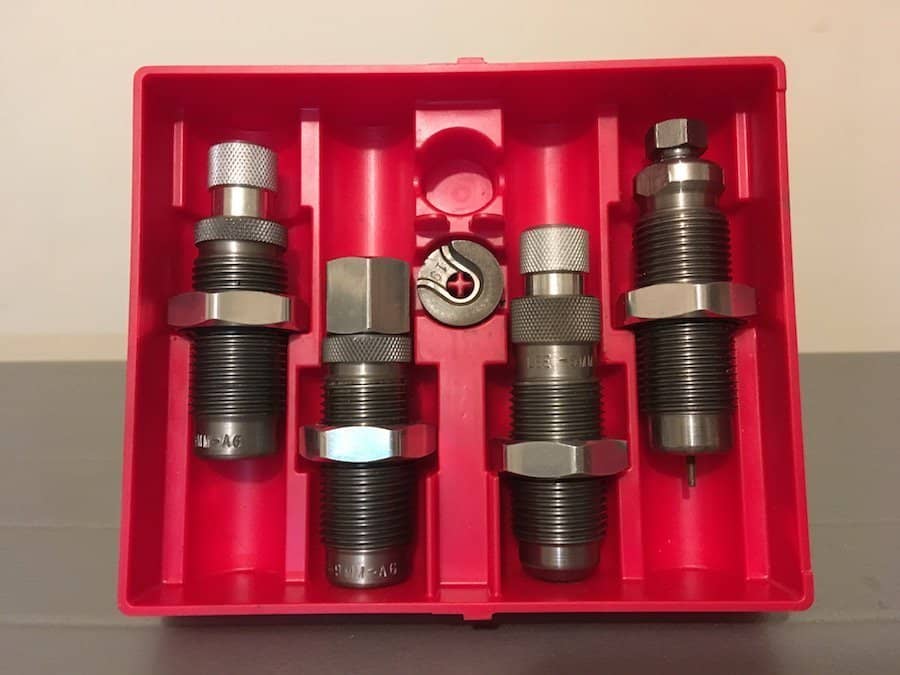
Reloading your own ammunition requires several essential pieces of equipment. Having the right tools will allow you to produce safe ammo and make the process of reloading much more enjoyable. Here is a list of essential reloading equipment to get you started.
Press

The heart of your reloading setup is going to be your press. This is the tool you will use to perform the most important parts of the reloading process.
Presses come in many different types. Each press type has it’s advantages and disadvantages, depending on the type of reloading you are doing.
Related: How to Set Up a Reloading Bench
Single Stage Presses
For a beginner, I feel that a single stage press, such as the RCBS Rock Chucker, is the best choice. A single stage press will allow a new reloader to become familiar with each step of the reloading process. Since they have fewer moving parts, they are good for producing very consistent and accurate rounds, such as hunting and long-range target cartridges.
Single stage presses are referred to as such because they perform one function each time you pull the lever. The function that it performs will depend on which die you have installed. Because of their simple design, a good single stage reloading press, such as the RCBS Rock Chucker, will likely last you for the rest of your life. I personally own the RCBS Rock Chucker and highly recommend it. You can find it by clicking here.
Turret Presses
A turret press is similar to a single stage press but has a rotating plate, called a turret, at the top where multiple dies can be installed at once. This allows a user to greatly reduce the amount of time spent changing out dies. Most turrets presses have enough holes that each turret can have dies for two calibers installed at once.
Some companies sell additional turrets for their presses which can be removed and swapped out. This will allow a reloader to replace one large piece for a caliber change instead of several.
Although they have more moving parts than a single-stage press, turret presses are still solid enough to produce consistent and reliable ammo. Many people consider the Redding T-7 Turret Press to be the standard for turret presses.
Progressive Presses
Although they are usually pretty expensive, progressive presses are great if you are doing a lot of high volume reloading. Reloading on single-stage and turret presses can be very time consuming when loading hundreds or thousands of rounds at once.
A progressive press dramatically reduces reloading time by performing multiple processes per lever pull. One pull on the press lever will resize a piece of brass, remove the old primer from it, fill a different piece of brass with powder, and secure a bullet onto yet a different piece of brass. These are common tools for professional shooters and others who go through a ton of rounds.
The only downside to progressive presses is that they provide a reloader with the least amount of control over their reloading since the machine does most of the work. When using a progressive reloader, you must make sure that the machine is working properly and has not run out of powder. This can be a steep learning curve for someone who is new to reloading.
Although several companies produce progressive presses, those produced by Dillon Precision are considered to be the best. Dillon even produces progressive press systems that are essentially home-based ammunition factories. You can find one by clicking here.
A Reloading Manual (or Several)
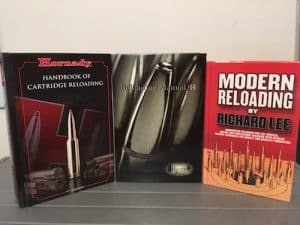
Reloading manuals are essential guides for producing safe ammo. Ammunition must conform to certain specifications in order to work properly. The brass must meet certain length requirements. The overall length of the cartridge has its own specifications. Certain powders should be used with certain types of loads, and using the wrong primer can cause problems.
A good reloading manual will give you all of this information in a well-organized and easy to understand format. Many reloading manufacturers have their own manuals. I recommend purchasing the manuals published by the companies whose components you use the most. For example, I use a lot of Hornady bullets for various calibers, so I bought their manual. It includes well-tested recipes using their bullets with various types of powders.
Powder Measure

A powder measure is an essential piece of reloading equipment that you use to dispense gunpowder onto your scale pan or directly into your cases. Most powder measures have a transparent glass or plastic body that is connected to a metal base with a lever. You move the lever to dispense the powder. The amount of powder that is dispensed will usually depend on a threaded rotating screw that limits the amount of powder that can come out at one time.
The accuracy of a powder measure will depend on its quality as well as the user. Super consistent powder measures are usually more expensive and do a better job than the ones that come with kits. Also, a reloader’s technique while operating the measure can make a difference in the measure’s accuracy and consistency. For example, moving the lever quickly and sharply will likely result in a slightly different amount of powder being dispensed than a slow and easy lever motion.
Powder Scale
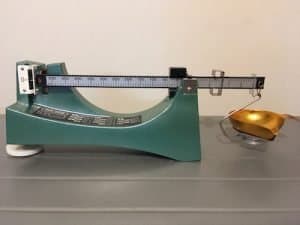
Safe reloading requires accurate and consistent powder measurements. Using too much or too little powder are both situations that can become dangerous under the right circumstances. A good powder scale will give you accurate measurements to ensure that you are loading the correct amount of powder into your ammunition.
Powder scales are available in both mechanical and digital varieties. Most mechanical scales are similar in design to the beam balances you used in your high school science classes. Some digital powder scales are combination powder measures and scales which dispense powder and weigh it. Others are simply scales that weigh powder that you dispense from either a separate powder measure or a trickler.
Dies

It is impossible to reload ammunition without the proper dies. Dies are precision-machined metal tools that are used to perform different functions necessary to the reloading process. They are caliber specific and are often sold in sets.
Sizing Dies
A sizing die will return a fired piece of brass to its original size. This is necessary because a piece of brass expands when it is fired. Resizing the brass will allow it to be cycled in a firearm. Many times, a sizing die will also remove the spent primer from the brass.
Expander Dies
An expander die is necessary when reloading straight-wall pistol cartridges, such as the 9mm, 45 ACP, and 38 Special. It will flare out the end of a piece of brass to make it easier to set a bullet inside. Expander dies are not needed for bottleneck cartridges such as the .223 Remington and .308 Winchester.
Bullet Seating Dies
A bullet seating die is used to seat the bullet in a piece of brass. They are adjustable so that the reloader can set the bullet depth and overall cartridge length exactly the way they want it. A bullet seating die is often the last die used to reload many calibers.
Crimp Dies
If you are loading for a semi-automatic pistol or rifle, then a crimp die is tremendously useful. When reloading for pistols, they will make sure that the case is small enough to chamber in any pistol. When reloading for rifles, a crimp die will prevent the bullet from moving within the case due to vibration.
Shellholders

A shell holder is a small piece of metal that fits into your press or priming system that holds the bottom of the brass in place. A shell holder will help the brass stay aligned while a press is operating and help extract the case from dies.
When priming a case, a shell holder will hold the case in place so that the priming tool can push a primer into position. Shell holders from one company are usually compatible with equipment from other companies, although there are some instances where they are not. For example, my Lee shell holder will work fine in my RCBS press, but it will not work in my RCBS hand primer.
The bottoms of RCBS shell holders have a concave cut, which accommodates the shape of the hand primer. Lee shell holders do not have this cut, which prevents them from fitting on an RCBS hand primer.
Shell holders such as the ones pictured are caliber-specific and should only be used with the calibers specified in the manufacturer’s reference tables. These are usually very easy to find online. For example, here is a link to the RCBS Reference Tables. These tables include caliber, shell holder size, and lots of other information.
As you can see above, shell holders tend to rust. To prevent rust, wipe them down with a thin coat of oil before storing, especially if they are aren’t going to be used for a while. It can be difficult to remove cases from the shell holder if it has rust on it.
Priming Tool

Another essential piece of reloading equipment is the priming tool. Priming systems come in many different types. Some priming tools mount to your reloading press, while others mount directly to your workbench.
Other priming tools are self-contained handheld units that prime a case through the use of a squeeze-activated lever. I like using the hand priming tools for a couple of reasons. First, they allow me to tell how much resistance there is when seating a primer. Second, hand primers are very portable. This allows me to bring it in from the shop and prime a bunch of cases while watching tv.
Powder Trickler
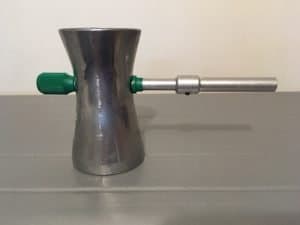
A powder trickler is used to fine-tune the amount of powder you put into a case. Many reloaders intentionally calibrate their powder measure to drop a little less powder than what they actually need. They will then use the powder trickler to add small amounts of powder until they reach the precise amount they need. This is a great way to produce consistent reloads.
Calipers
Reloading ammunition is a very precise science. The brass must be a certain size in order to chamber in the gun. The overall cartridge length must be within a specific range to ensure accuracy and prevent dangerous overpressure. The best tool to check measurements such as these is a set of calipers.
Calipers are precision measuring tools that can determine how long an item or opening are. They come in several different types, but the most popular and accurate types are dial calipers and digital calipers.
For my purposes, I prefer a dial caliper. The one that I own was made by Hornady and is accurate and easy to use. Using calipers helps me ensure that I am producing safe and reliable ammunition.
Case Trimmer

Each time a piece of brass is resized, it’s overall length grows slightly. After enough firings, the piece of brass can become too large, making it difficult or impossible to chamber in a firearm. A case trimmer is a miniature lathe that can precisely cut away excess brass from the end of a case neck.
To save space on my bench, I have mounted mine to a portable base. I used scrap wood left over from a fencing project. The case trimmer is permanently attached to the base, and the whole setup can be mounted to my bench with c clamps. When not in use, I can store it on a shelf.
To make my case trimmer easier to use, I put together a cheap but very effective power adapter. It allows me to use my drill and a nut driver to turn the cutter instead of using the included handle. You can find full instructions for how to make your own DIY case trimmer power adapter by clicking here.
Other Essential Reloading Equipment
Brushes

You will need a small supply of brushes while reloading. Primer pocket brushes clean out all of the residue left behind after a primer is removed from a piece of brass. Using these brushes makes inserting a new primer easier and can also prevent misfires caused by a dirty and obstructed flash hole.
Case neck brushes allow you to clean residue from the inside of a piece of ammo brass. When lubrication is applied to the brush, it will also leave a small film of lube inside the cases’ neck. This will make resizing the case much easier and will reduce the amount of wear on your dies and brass.
Case Lubricant and Pad
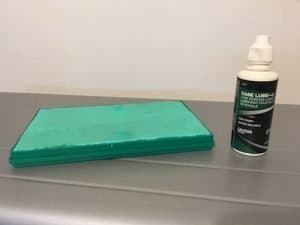
Another essential piece of reloading equipment is a bottle of case lubricant (case lube) and lube pad. When used together, these two items will make resizing brass much easier and will reduce the chance of a piece of brass getting stuck in a die. The only time that you will not need to use case lube is when using carbide dies. Carbide dies are so smooth that using case lube is unnecessary.
To use case lube, place a few drops of it on the pad. Then, gather a few pieces of brass and roll them on the pad. This will spread the lube over the pad and leave some on your brass. When resizing cases becomes more difficult and starts to feel “gritty”, add a few more drops of lube to the pad.
Chamfer and Deburring Tool

A chamfer and deburring tool is a small metal cutting tool that helps prepare brass for reloading. They are typically used on brand new brass or brass that has just been trimmed. The chamfering side of the tool looks like a bladed cone that will add a chamfer to the inside of a case neck. This will make seating a bullet much easier. The deburring side of the tool is used to remove any burrs from the exterior of a case neck.
Reloading Tray

A reloading tray is an essential piece of reloading equipment because it keeps your cases organized while you are working and allows you to move them if necessary. It will also reduce the chances of you making a mess by knocking cases over.
While many reloading trays are universal, some trays are caliber specific. It is a good idea to have at least two reloading trays. Most trays will only hold 50 cases, meaning you can only do batches with 50 rounds or less. Having multiple trays will allow you to load larger batches at once, reducing the amount of time that you spend changing dies. This is especially true when using a single stage press.
Where to Get All of This
Although it may seem like there is a ton of essential reloading equipment, most of it can be purchased in kit form. Most of the items that you see pictured were from my RCBS Rock Chucker Supreme Master Single Stage Press Kit. This is a great kit from one of the top reloading equipment manufacturers. It is the newer version of the same kit my grandfather used as a gunsmith. Kits are available from local gun shops, Midwayusa.com, Brownells.com, and many other vendors.
The only items in this article that were not included in the kit were shell holders, dies, the case trimmer, and the powder trickler. A reloading manual was included, however, I have purchased a couple of others separately.

